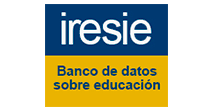SOCIAL REPRESENTATIONS OF ELEMENTARY PUBLIC SCHOOL STUDENTS ON VIOLENCE IN THE SCHOOL
DOI:
https://doi.org/10.5216/ia.v37i1.18874Abstract
This research sets out to describe the social representation made by elementary school students from two State schools in Salvador (Bahia) on school violence, by identifying the meanings associated with this violence, its roots and possible prevention. Data was collected through semi-structured interviews about violence in general, its interfaces with the school, possible causes and prevention etc. The data collected leads one to understand that violence is linked to physical abuse and crime, where the students themselves are responsible in the first place for the production of violence. Representations of violence in schools reveal meanings, such as disrespect and discrimination, as well as school violence in the form of physical, verbal and psychological aggression.Downloads
Downloads
Published
How to Cite
Issue
Section
License
Inter-Ação uses the Creative Commons Attribution 4.0 License for Open Access Journals (Open Archives Initiative - OAI) as the basis for the transfer of rights. Open access means making documents available on the Internet free of charge, so that users can read, download, copy, distribute, print, search, or link to the full text of documents, process them for indexing, use them as input data for software programs, or use them for any other lawful purpose, without financial, legal, or technical barriers.
Authors publishing in this journal agree to the following conditions:
1) Authors retain copyright and grant the journal the right of first publication, with the work simultaneously licensed under the Creative Commons Attribution License, which permits redistribution of the work with attribution and first publication in this journal.
2) Authors are permitted to enter into additional, separate agreements for non-exclusive distribution of the version of the work published in this journal (e.g., for publication in an institutional repository or as a book chapter), with attribution and first publication in this journal.
3) Authors are permitted and encouraged to publish and distribute their work online (e.g. in institutional repositories or on their home page) at any time before or during the editorial process, as this may generate productive changes as well as increase the impact and citation of the published work.















